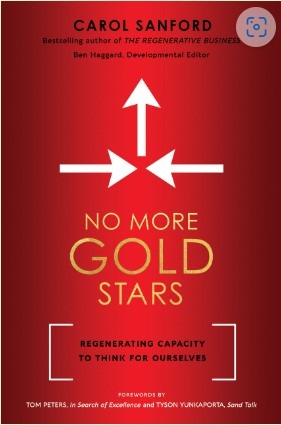
Rooted Leadership talk at Disrupt HR
Want to hear regenerative leadership explained in 5 minutes? Here’s a video of me speaking at Disrupt HR event in Nottingham. If you’d like to
When it comes to resilience our tree cousins are masters. They are undoubtedly our best teachers, having learned numerous tactics over hundreds of millions of years. Fortunately, we can shortcut our own journey towards resilience by employing many of their methods.
The definition of resilience is to be able to bounce back after difficult experiences, such as trauma, or significant stress. All trees demonstrate resilience – they all cope with wind, changes in temperature, varying levels of rain and invasions by pests and diseases. Depending on their habitat, trees of different species can survive being scorched, parched, frozen, poisoned by toxins or salt, struck by lightning, eaten, irradiated, maimed, damaged, or cut to the ground. When I think about those traumas I feel inspired to develop strategies to overcome my own troubles, feeling that they are minor in comparison!
Being resilient is not about being tough enough not to feel distress or emotions. A tree may not have nerves, but it ‘feels’ a limb being struck by lightning nonetheless (or else it wouldn’t make the effort to heal over the wound). One of the most resilient trees on the planet was a ginkgo that survived just one mile from the Hiroshima nuclear blast in 1945. I’m sure it didn’t do so without experiencing significant internal trauma.
For ourselves, we must acknowledge the pain and sadness that trauma brings and recognise that it is part of the process of recovery. Hurt will be with us along the journey after trauma, rather than being a single hurdle at the start to jump over before we can move on. If this applies to you, examine each emotion so that it doesn’t transform into anger, denial, rage or frustration. Remember that a tree strives to be productive rather than paralysed. In the same way, we should use our emotions as a spur to action rather than letting ourselves become frozen.
Everyone has the capacity for resilience inside of them – it’s not something you either have or don’t have. And often the most resilient people are not those you might expect. Strong athletes with gold medals often face major struggles when their career ends. Conversely, I have worked with victims of sexual exploitation, young girls, who astounded me with their courage and ability to rebuild their lives once they escaped from their traffickers and were given appropriate support.
Becoming more resilient involves effort. Setting yourself up with firm roots and investing in your wellbeing is important, as we’ve discussed. Create ‘buffer zones’ and ‘windbreaks’, by building an environment around you that is protective and nurturing. And, when things have gone well, store the results of the ‘harvest’ for next time, keeping your ‘energy bank account’ in the black, with deposits of time, friendships, happiness and knowledge. Developing self-belief and courage will give you confidence that you will succeed when you are knocked back. Over time you can build a network of skills that build across a range of areas, so that, just as for a tree, if one branch gets damaged you have others to nourish you, and the knowledge that you can grow more when you need them.
However well prepared you are, problems will strike out of the blue, like a freak storm, so there’s no point in blaming yourself for being unprepared when they do. Having an optimistic outlook is shown to aid ‘boucebackability’. My role models for this are the eucalyptus trees, which may be ravaged by fire but use that as an opportunity for re-growth of themselves, and germination of their offspring. Those seedlings seize the new opportunities that change brings.
Remember that true resilience involves facing the challenges of the world (and your world) head on rather than trying to ignore them, or engage in denial, which is a natural response when things get tough. We are living in challenging times and we all need to build our resilience in order to weather the problems that we’re facing, and those to come. We must develop the strength not only to bounce back, but in the process to create a better place to bounce back to. Think of the forests of giant redwoods that stood before the Alps or the Rocky Mountains existed. They didn’t survive without standing tall and carrying on, adapting and thriving and making the most of new opportunities.

Want to hear regenerative leadership explained in 5 minutes? Here’s a video of me speaking at Disrupt HR event in Nottingham. If you’d like to

In “No More Gold Stars,” Carol Sanford challenges conventional notions of achievement and success. Carol is a renowned business consultant and educator and what struck

This week has felt a little bit epic! I have found myself taking deep, exhaling breaths as I sit with the medley of feelings I have